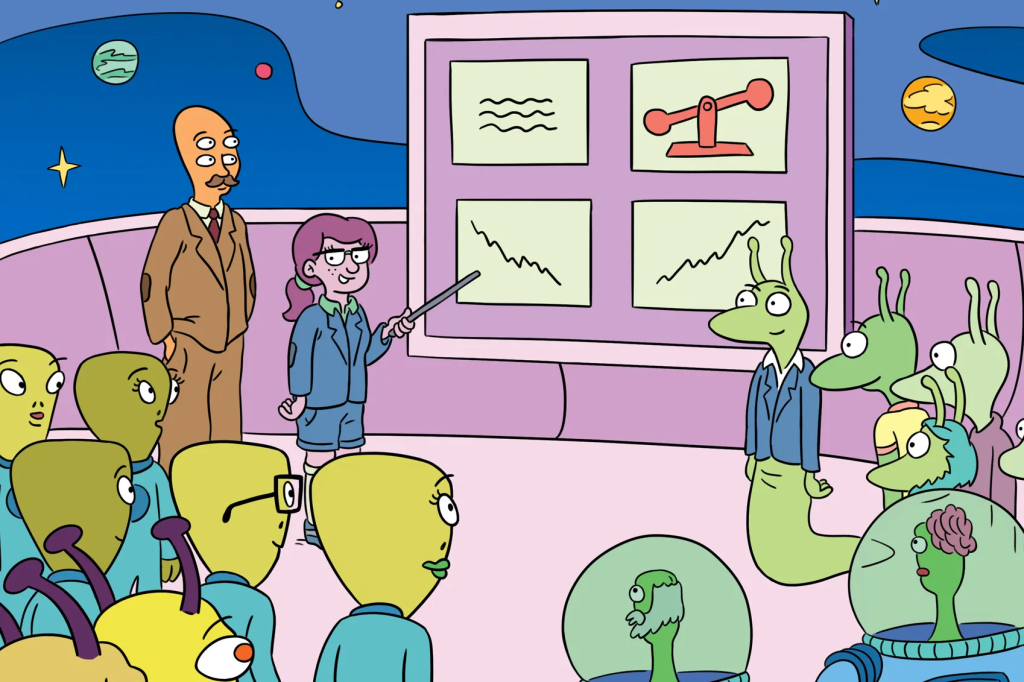
The New York Fed recently published The Story of Monetary Policy, the third issue of its new Educational Comic Book Series. In the story, intrepid characters travel to previously unseen worlds, meeting new friends and teaching economic lessons along the way. Today, we offer a behind-the-frames look at the comic book’s production — from idea to sketch to print — and the creation of a world “way, way out at the edge of the universe” to educate students about economics and monetary policy.
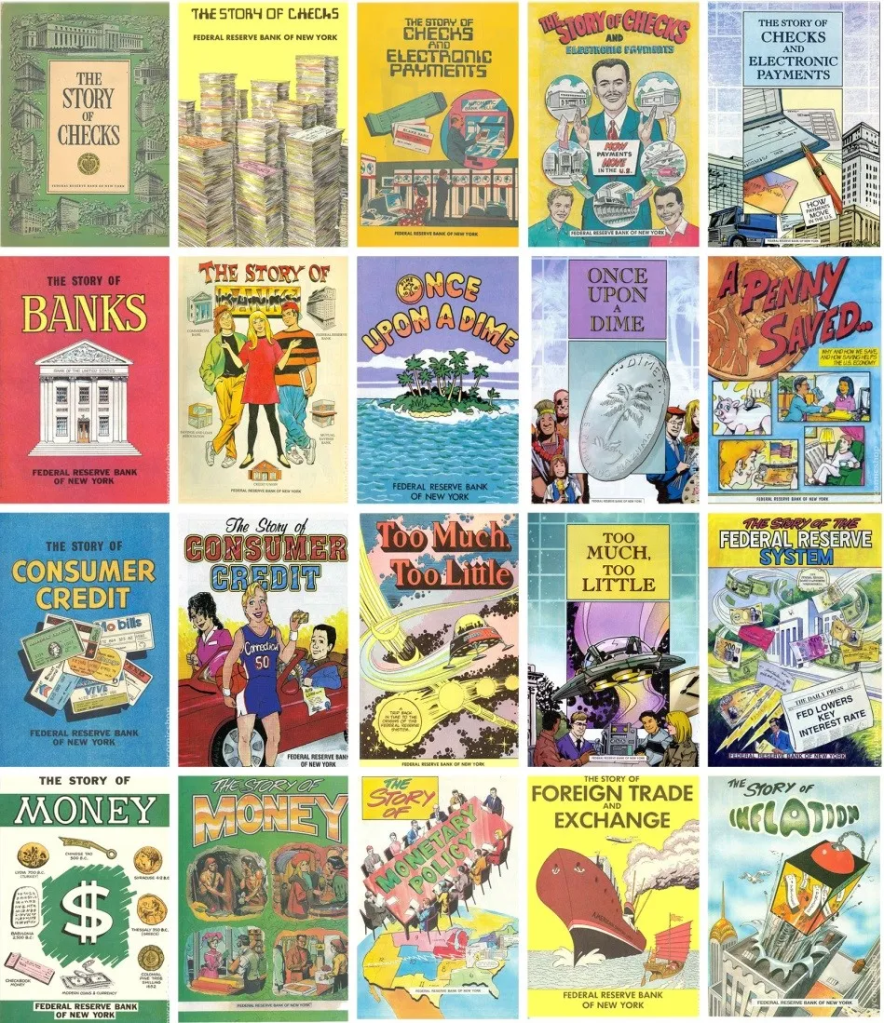
The New York Fed’s comic book covers over the decades.
The New York Fed has published educational comic books since the 1950s, with the aim of promoting economic literacy among students and teachers alike. Taking inspiration from this historical collection, the Outreach & Education team decided to reboot the series for modern audiences.
The process started with economic educators, artists, and researchers brainstorming the design, characters, and accompanying lessons for the new series. Early in the creative process, the production team decided that an overly serious design might quickly grow stale. On the other hand, a design that was too simple or abstract might fail to illustrate the various nuances of a society seeking to address economic problems through monetary policy.
The team decided to set the story in a quirky sci-fi universe, a creative approach aimed at keeping student audiences engaged amid a discussion of today’s banking policies and practices. The intergalactic theme also allowed for the use of cause-and-effect examples of economic principles that are not restricted by the rigors of a more realistic environment. At the same time, the setting needed to feel real so readers could identify with the story. With those parameters guiding the process, the production team landed on the idea of a fanciful planet called Novus.
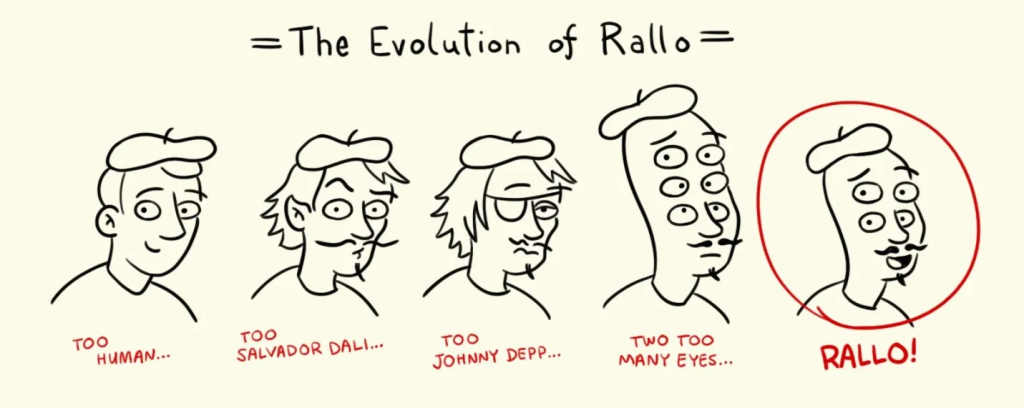
Rallo, who was originally featured in the first iteration of Once Upon a Dime in the 1970s, went through a few changes in the relaunch.
Once the setting was determined, the characters of Planet Novus began to emerge. The production team decided early on that, unlike in the New York Fed comic books of the 20th century, the characters in the new series would recur from one issue to the next. That would allow the students to grow with the characters, their pace of learning matching as the complexities of economics and monetary policy are revealed.
To start, the production team sketched the lead duo, Flora and Glix. New to the relaunched series, they are young, curious, and driven to understand more about the economics of the world around them. Just like readers of these stories, Flora and Glix might doubt themselves or make mistakes when facing new challenges — but they are also hopeful, motivated, and best at solving economic problems when they work together.
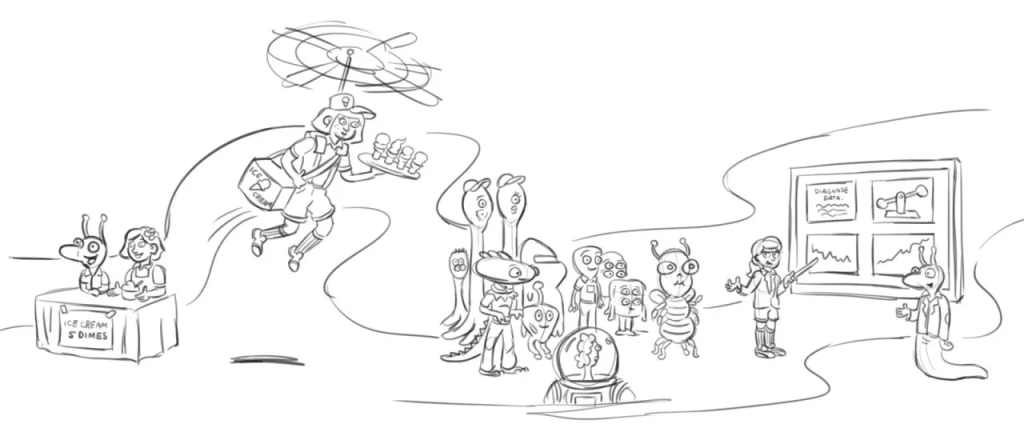
A sketch of Planet Novus entrepreneurs.
Following the design and character development, the story and its lesson soon came to life on the page. Given that the main objective of the comic book series is to promote economic literacy, the production team engaged with experts from the New York Fed’s Research department to distill complex concepts such as currency, banking, and the Federal Reserve System. The production team, researchers, and economic educators all contributed to ensuring the lessons were integrated throughout the narrative and could easily be absorbed by readers.
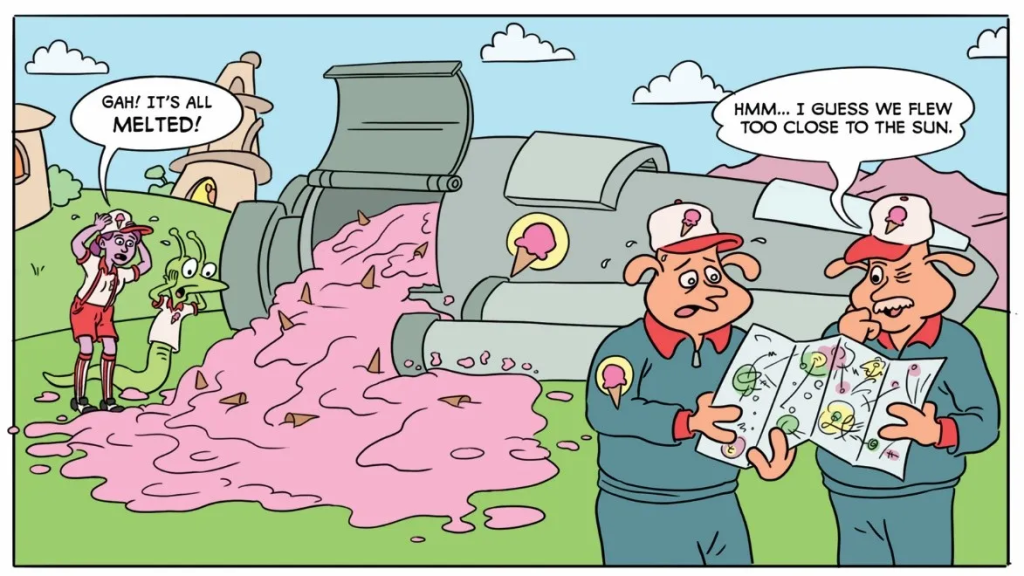
The main characters Flora and Glix struggling to keep their ice cream business afloat.
In the first issue, Once Upon a Dime, Flora and Glix start out as kids with a bit of entrepreneurial spirit, creating a sidewalk ice cream stand and then owning a small business. In the second issue, The Story of the Federal Reserve System, they visit Earth in an attempt to solve a monetary crisis on their home planet. In The Story of Monetary Policy, Flora and Glix tour the galaxy to advise other worlds on how to conduct monetary policy and help keep economies stable.
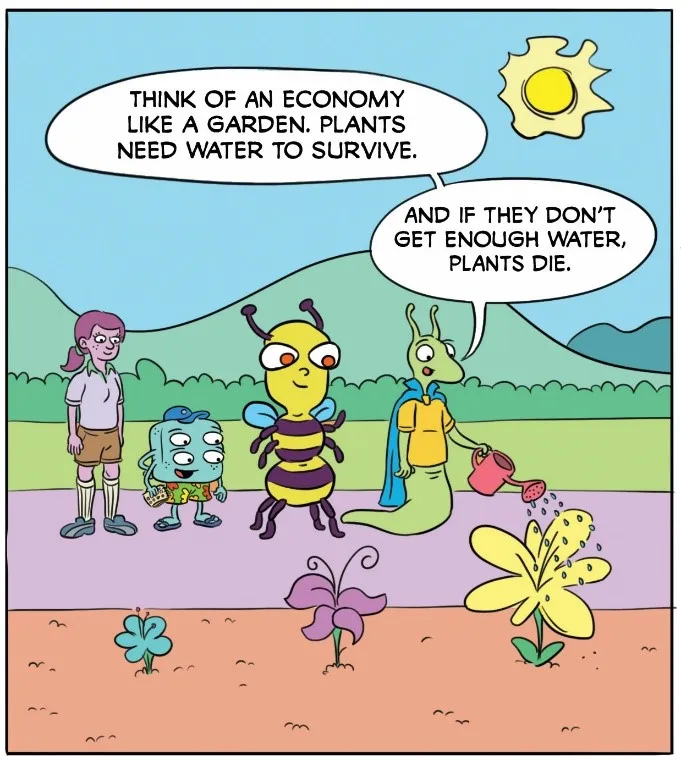
Flora and Glix advising other worlds how to help keep economies stable.
The last step in the creative process was printing and distribution. While these publications are readily available for download on the New York Fed’s website, it is important for students to be able to hold hard copies of the comic books in their hands to spark curiosity and engagement. The team selected paper that could hold up to the rigors of classroom use and worked with the printer to adjust the colors. A four-color machine printed 400 pages per minute, and the books were then assembled and packed, ready to go to teachers and classrooms across the country.
To accompany the comic book, the New York Fed created lesson plans for teachers that build off each story in the series. The lesson plans incorporate the principles from each issue to promote economic literacy and serve as a guide for numerous classroom activities.
All three comic books and the associated lesson plans are available for download on the New York Fed’s website. Printed copies are available as classroom sets for middle schools and high schools in the United States and U.S. territories.
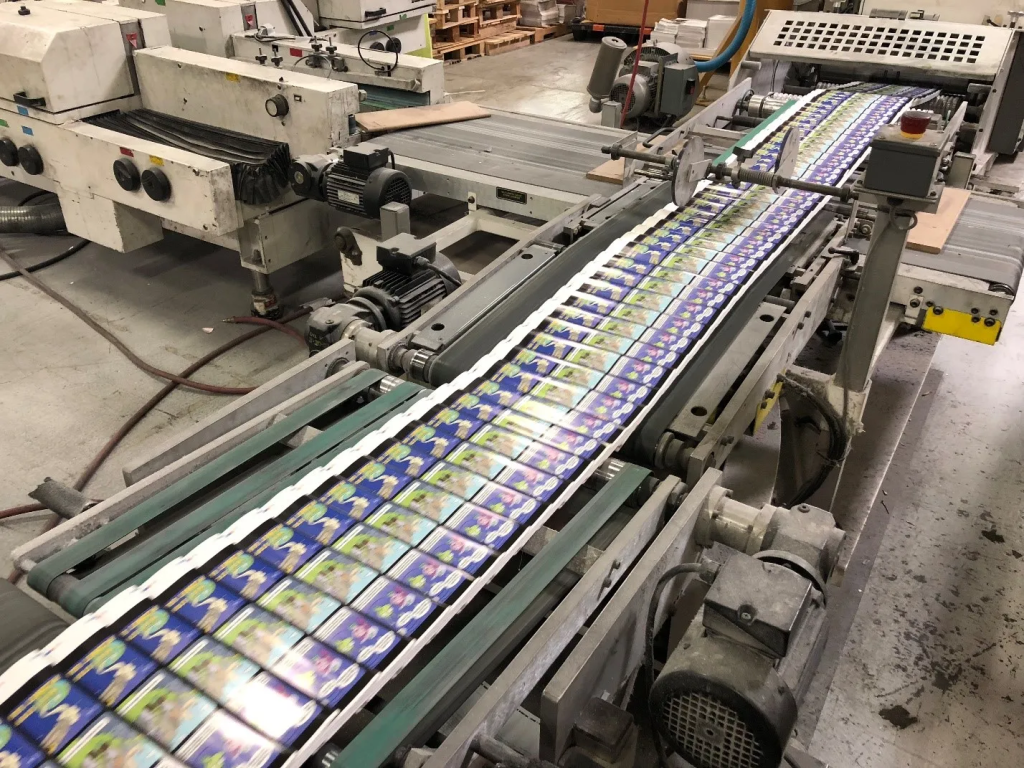
Hot off the presses.
This article was originally published by the New York Fed on Medium.
The views expressed in this article are those of the contributing authors and do not necessarily reflect the position of the New York Fed or the Federal Reserve System.














